When berthing a ship for loading and unloading operations, it will be at the mercy of the weather conditions there such as wind and current, making it necessary to be tied up to the quay.
The ships spend a large part of their total operational lifetime (20-40% of it) berthed at a port for loading and unloading operations.
All this evidences the great economic weight of the port stage during the operational lifetime of ships, thus, having "modern, safe and quick" mooring systems will help reduce costs.
Among other things, mooring personnel must take into account the following stresses, port limitations and ship requirements to ensure optimum berthing.
External stresses on the ship
The main external forces that will affect the ship during berthing are caused by the following:
- Wind and currents
- Waves
- Resonances due to long wave phenomena
- Tides
- Other ships passing by
- Loading/unloading the ship
Types of mooring
Generally, there is limited space available to moor a ship so, perfect securing using hawsers to prevent it from moving is essential.
Several manoeuvres and operations should be taken into account. Those are generally known as "mooring" and, among others, different Mooring techniques are used depending on the location and direction of the ship. Mooring can be bow-to, stern-to or alongside.
Bow-to mooring
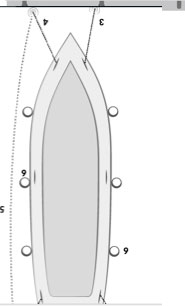
Stern-to mooring
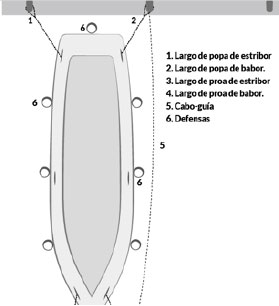
Alongside mooring

Berthing and mooring can also be classified as follows depending on the mooring space used:
- Quays
- Jetties
- Dolphins
- Buoys, buoy fields and single buoys
- Floating transfer stations
Mooring at quays
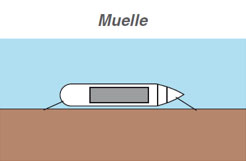
A quay refers to permanent structures for berthing and mooring ships that form a continuous berthing line which, generally, is longer than the ship tied up to it. They are completely or partially connected to land by means of a backfill at their rear part, thus creating rear esplanades attached to them.
Berthing at jetties
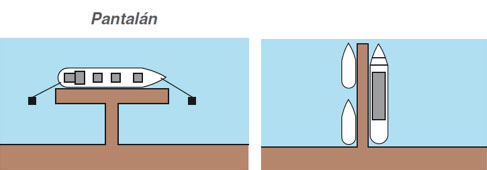
A jetty refers to permanent or floating structures for berthing and mooring ships which may form continuous or discontinuous berthing lines. The ships can be tied up at both sides of the same. The main difference with quays is that jetties do not have any attached backfill and, thus, no esplanades are created. They may or may not be connected to land.
Berthing at dolphins
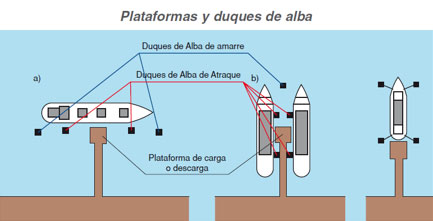
Dolphins are isolated offshore structures used for berthing, mooring or assisting in berthing manoeuvres. They can also be used for a simultaneous combination of several of the latter. They may be isolated or form part of discontinuous jetties as a mixed solution: either placed in front of or complementing auxiliary platforms where no berthing is possible or forming a single mooring and berthing line.
Berthing at buoys
Buoys are floating mooring structures whose movements are limited due to a chain which is tied to an anchor, a dead weight or both elements, these elements create a fixed point in the bottom of the sea. A mooring buoy is called a single buoy when it also allows bulk loading and unloading because it is connected to land by means of an undersea pipe. In this case, the buoy is usually tied by several chains to limit horizontal movements as much as possible.
Berthing at buoy fields
Buoy fields are layouts enabling a ship to be moored to several buoys at the same time to limit the movements of the moored ship.
Floating transfer stations
Transfer stations consist of silo vessels with unloading equipment which can be used for berthing feeder ships, barges or ocean-going ships at both sides of the same. This type of facility is an economic alternative to ground transshipment facilities as it can operate in less sheltered waters.
